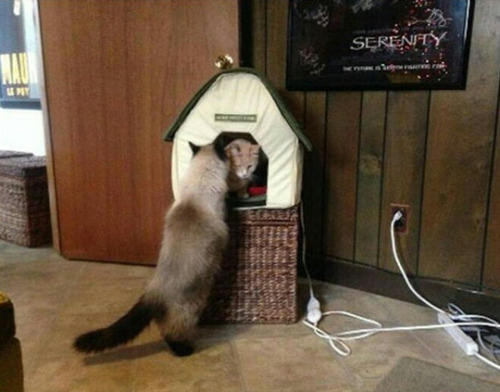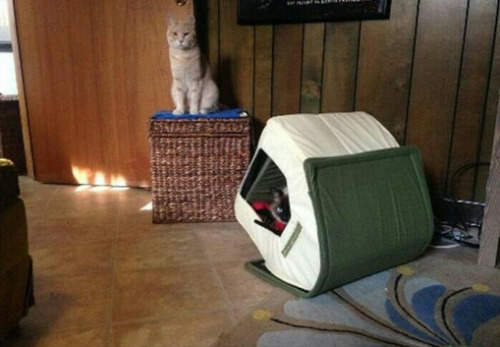This Is The NASA I Love To See
This is the NASA I love to see
May the 4th Be With You
Happy May the 4th!
How many connections does America’s space program have with the fictional world of Star Wars? More than you might think…
Join us as we highlight a few of the real-world TIE-ins between us and Star Wars:
Space Laser


Lasers in space sounds like something straight out of Star Wars, but it’s also a reality for us. Our own GEDI (yes, like Jedi) instrument will launch later this year to the International Space Station.


GEDI stands for the Global Ecosystem Dynamics Investigation lidar. It will study the height of trees and forests, using three lasers split into eight tracks, and create a 3D map of forests around the planet.

With GEDI’s new tree maps, we’ll get a better understanding of how much carbon is stored in forests all over Earth, and how forests will be able to absorb increasing carbon dioxide in the atmosphere.
The Jedi knights may help protect a galaxy far, far away, but our GEDI will help us study and understand forest changes right here on Earth.

Another JEDI

There’s another Jedi in town and it happens to be orbiting the planet Jupiter. Our Juno spacecraft, which arrived at the gas giant in July 2016, has an instrument on board that goes by the name of JEDI - the Jupiter Energetic Particle Detector Instrument.
While it doesn’t use a light saber or channel “the force”, it does measure high-energy particles near Jupiter. Data collected with the JEDI instrument will help us understand how the energy of Jupiter’s rotation is being funneled into its atmosphere and magnetosphere.
Death Star Moon

We know what you’re thinking…”That’s no moon.” But actually, it is! This is a real picture taken by our Cassini spacecraft of Saturn’s moon Mimas. In this view taken on Cassini’s closest-ever flyby of Mimas, the large Herschel Crater dominates, making the moon look like the Death Star. Herschel Crater is 130 kilometers, or 80 miles, wide and covers most of the right of this image.
We Actually Do Have the Droids You’re Looking For

We have robots roving and exploring all over the solar system, but it’s our own “R2” that’s most likely to resonate with Star Wars fans. Robonaut 2, launched in 2011, is working along side humans on board the International Space Station, and may eventually help with spacewalks too dangerous for humans. Incidentally, an earlier version of Robonaut bore a strong “facial” resemblance to enigmatic bounty hunter Boba Fett.

Another “droid” seen on the space station was directly inspired by the saga. In 1999, then Massachusetts Institute of Technology (MIT) professor David Miller, showed the original 1977 Star Wars to his students on their first day of class. After the scene where hero Luke Skywalker learns lightsaber skills by sparring with a floating droid “remotes” on the Millennium Falcon, Miller stood up and pointed: “I want you to build me some of those.”
The result was “SPHERES,” or Synchronized Position Hold, Engage, Reorient, Experimental Satellites. Originally designed to test spacecraft rendezvous and docking maneuvers, the bowling-ball size mini-satellites can now be powered by smart phones.
A few more TIE ins…

When space shuttle Atlantis left the International Space Station after 2007’s STS-117 mission, it caught a view of the station that looked to some like a TIE fighter.

The “TIE-ins” go beyond casual resemblance to real engineering. We already use actual ion engines (“TIE” stands for “Twin Ion Engines”) on spacecraft like Dawn, currently orbiting the dwarf planet Ceres. In fact, Dawn goes one better with three ion engines.
Want more Star Wars connections? Check out THIS Tumblr to learn about the REAL planets we’ve found outside our solar system that resemble planets from the movie.
Take THIS quiz to see if you know more about the Milky Way galaxy or a galaxy far, far away.
Make sure to follow us on Tumblr for your regular dose of space: http://nasa.tumblr.com.
More Posts from Duxgregis and Others


The total solar eclipse which crossed from Alaska to Texas spurred many to make the trip West in 1878. Dr. Henry Draper, a medical doctor and former chair of physiology at New York University, assembled a group who watched the eclipse from the railroad outpost of Rawlins, Wyoming Territory and made some observations.
Never forsaken

“You were never forsaken in this magnitude.” Mikael Aldo
Sonnet for President Trump
Shall I compare thee to a Shakespeare play? Thou art less clever and less literate, But how else should poor poets have their say? Alas, our leader lacks a donkey’s wit! Sometime too fierce the fire of ego burns, And when a man is made to look a fool, He rages ’gainst the mockery he earns, As little boys will cry when teas’d at school. But thy eternal tantrums shall not wane, Nor shalt thou e’er unclench thy tiny fists, Nor listen when the people dare to say, “’Tis you, dear sir, who made a scene of this.” So long as men can breathe and speech is free, The Bard shall speak and show thy shame to thee.
(4 July 2017, in honor and defense of freedom of artistic expression)
Neil 2020





8.28.17
Navigating Space by the Stars





A sextant is a tool for measuring the angular altitude of a star above the horizon and has helped guide sailors across oceans for centuries. It is now being tested aboard the International Space Station as a potential emergency navigation tool for guiding future spacecraft across the cosmos. The Sextant Navigation investigation will test the use of a hand-held sextant that utilizes star sighting in microgravity.
Read more about how we’re testing this tool in space!
Make sure to follow us on Tumblr for your regular dose of space: http://nasa.tumblr.com




(via BoringEnormous)
I love this

Rachel C Lewis | @wnq-quoteoftheday | @wordsnquotes-online

A book crystallized in the ocean
This is why you should always speak your mind

I knew my remark would be unpopular and met with nasty comments, misguided statements about Game of Thrones and the film industry, insinuations that there aren’t any good women or nonwhite directions, couple of lewd comments about my sex life. There is truth to the adage: Facebook is a cesspool.
What I didn’t know is that I would get enough attention to make the top comment.
At the time of writing, sixty hours after initial posting, it’s running a little less than 80% laugh reactions—so, people thinking I’m a moron—and it’s running about 1,100 reactions and 324 replies.
Unfortunately for my would-be adversaries, I don’t debate on Facebook and it is a favorite pastime to read the vitriol and mediocre hash slung in my direction as if it’ll have any effect on my self-esteem. Fortunately, you don’t have to do the same. I present: the major response patterns and why they don’t hold any water.
-
 ashiraashiraashira reblogged this · 1 year ago
ashiraashiraashira reblogged this · 1 year ago -
 birswhamvetivni liked this · 1 year ago
birswhamvetivni liked this · 1 year ago -
 gogogoat495 liked this · 1 year ago
gogogoat495 liked this · 1 year ago -
 shirochin liked this · 2 years ago
shirochin liked this · 2 years ago
